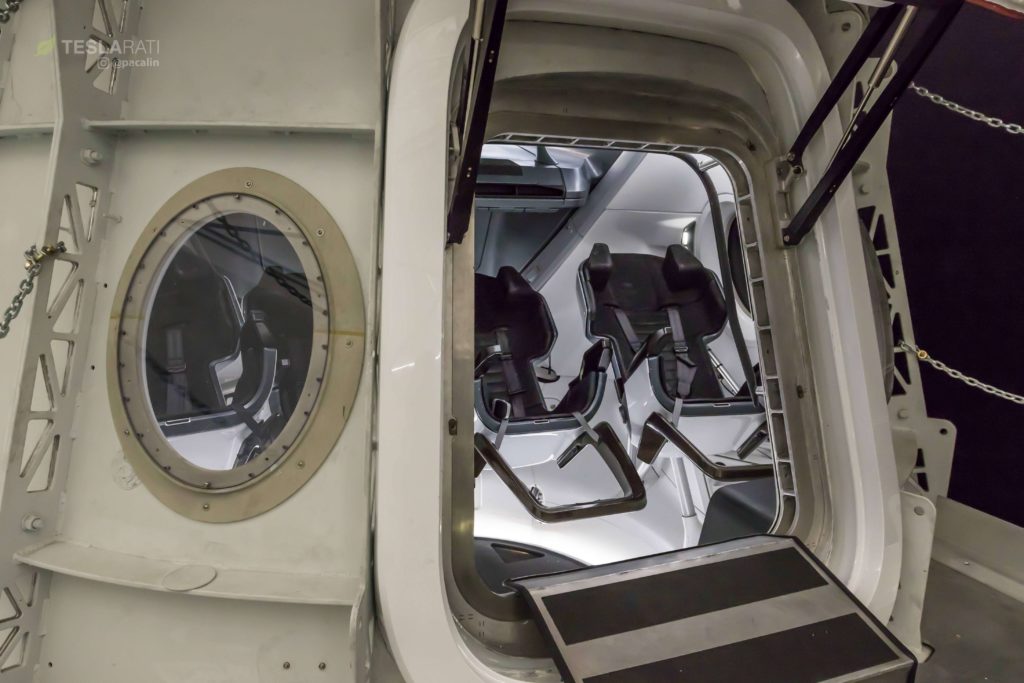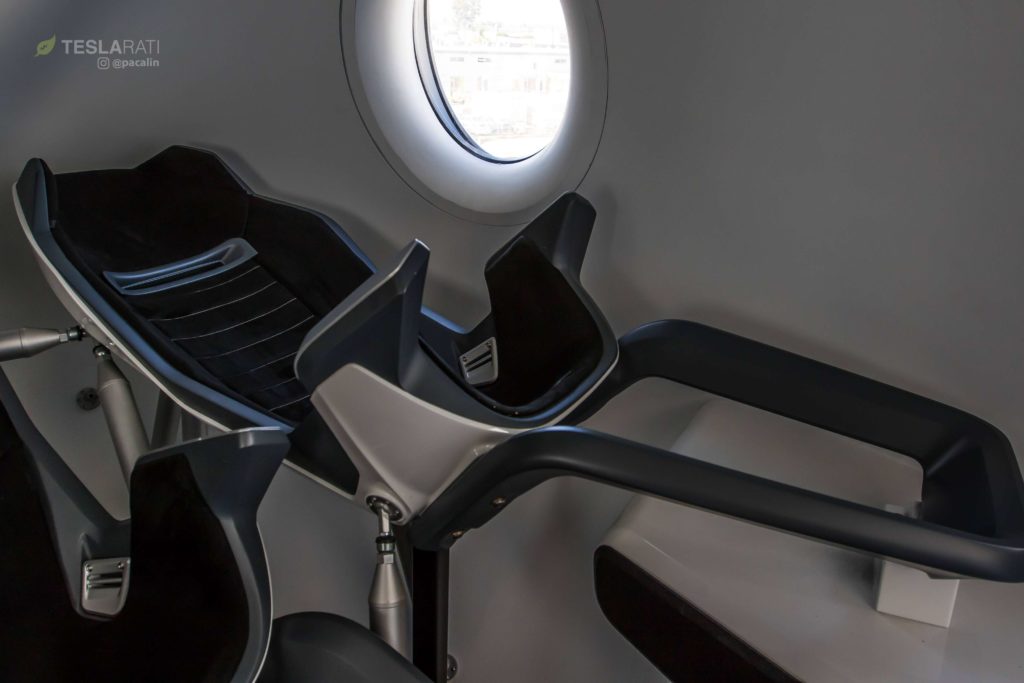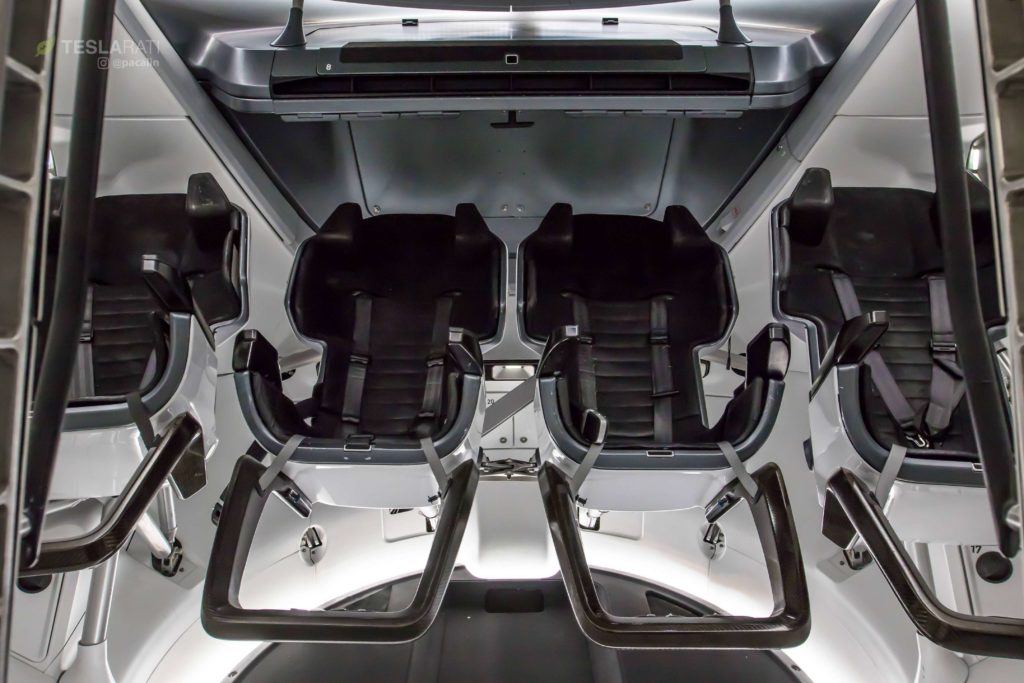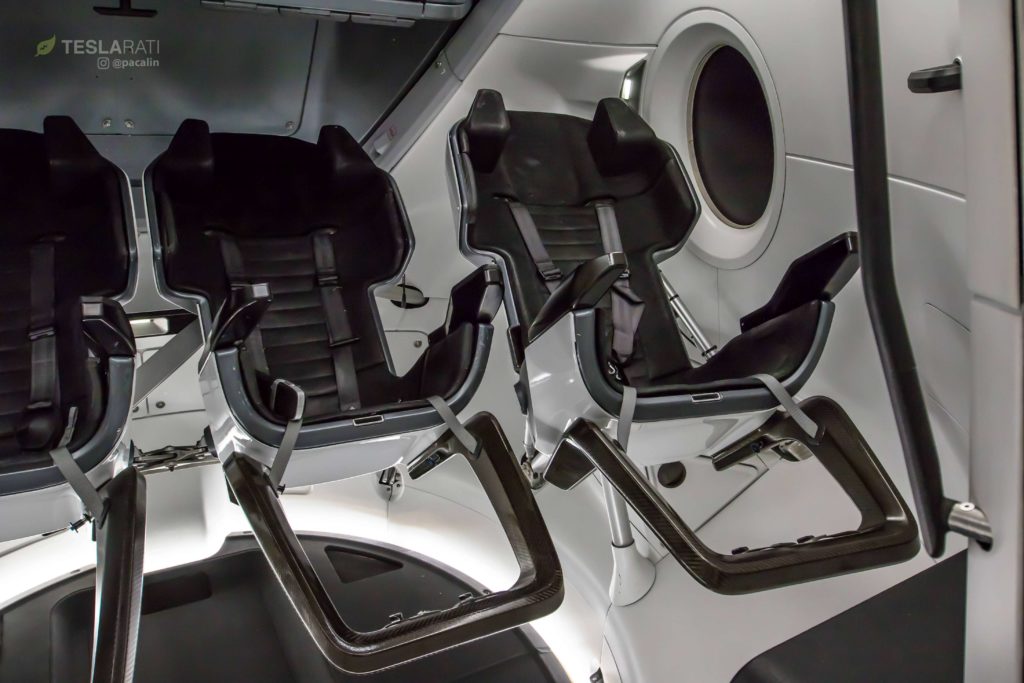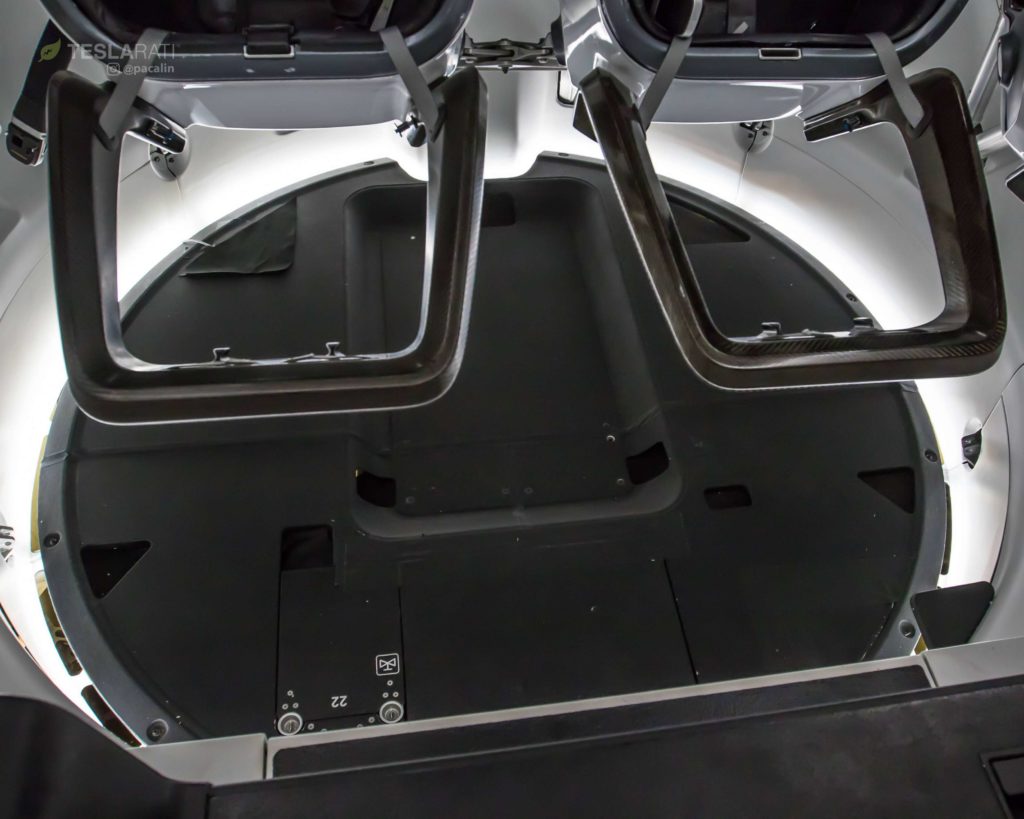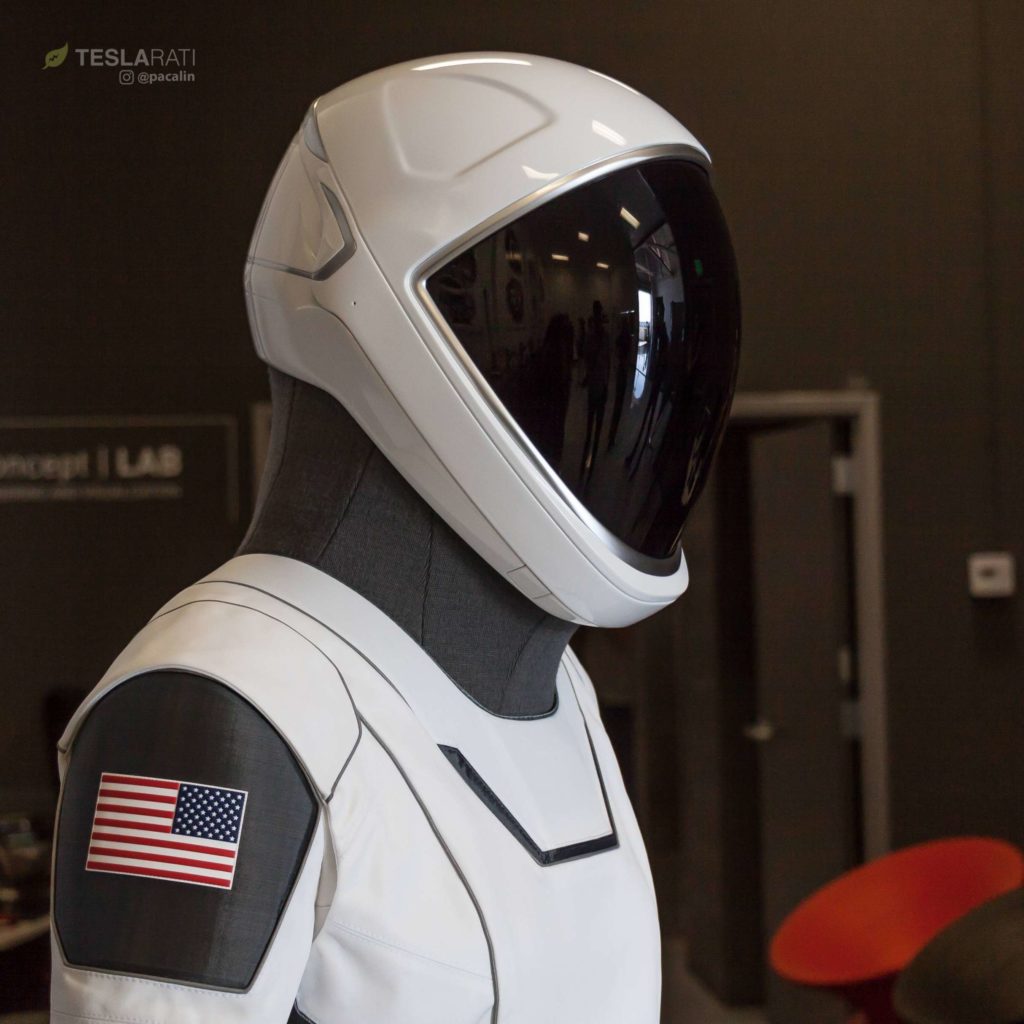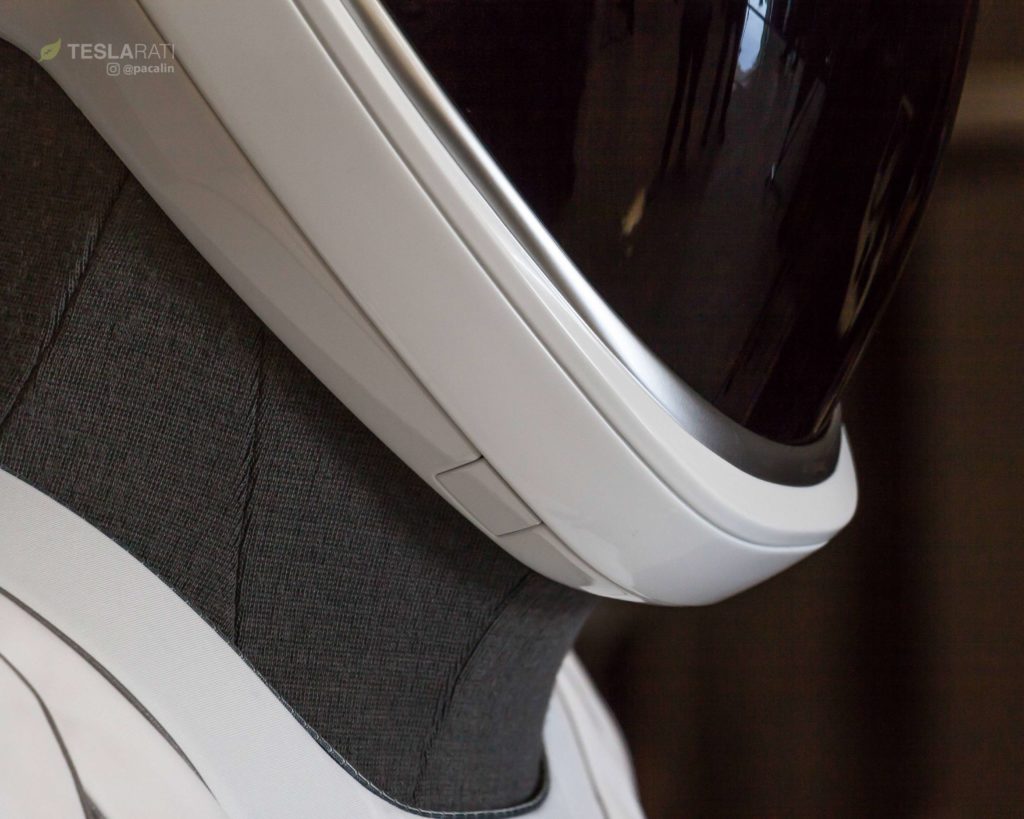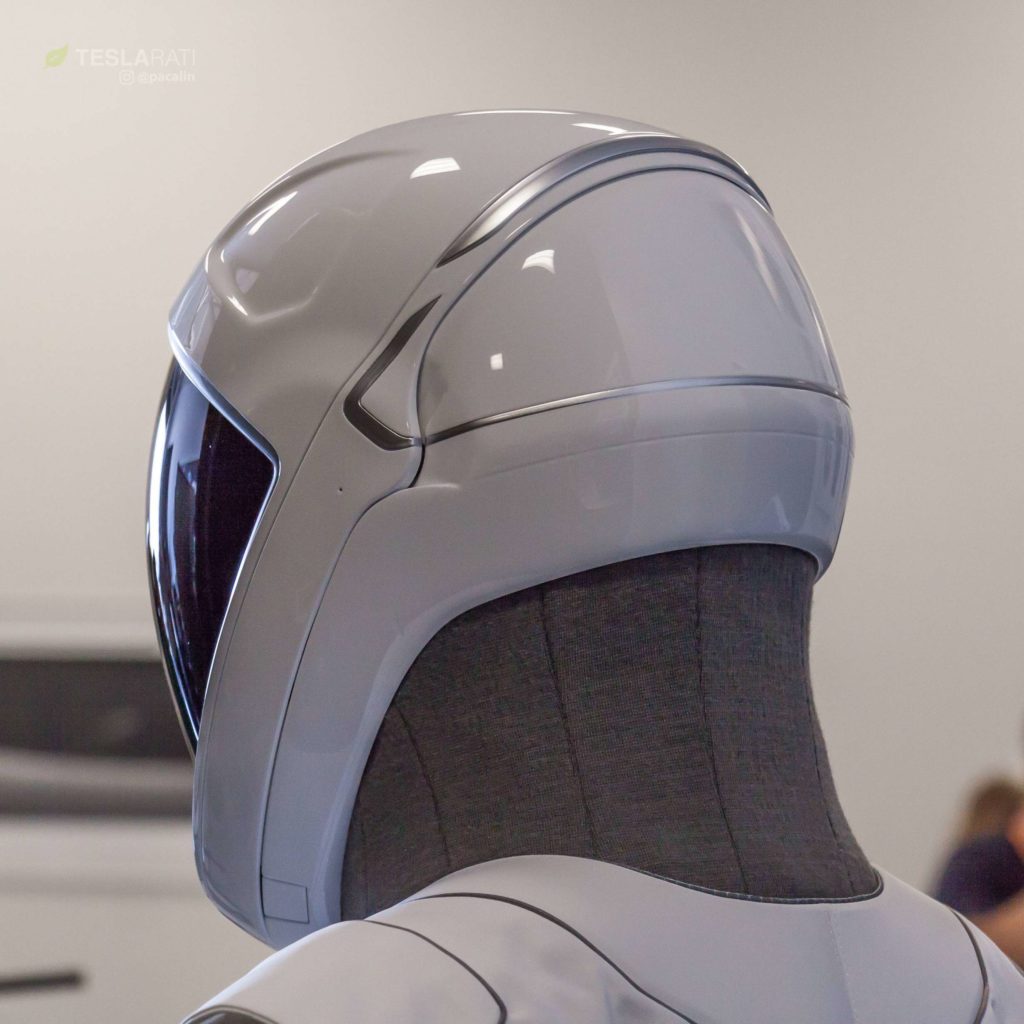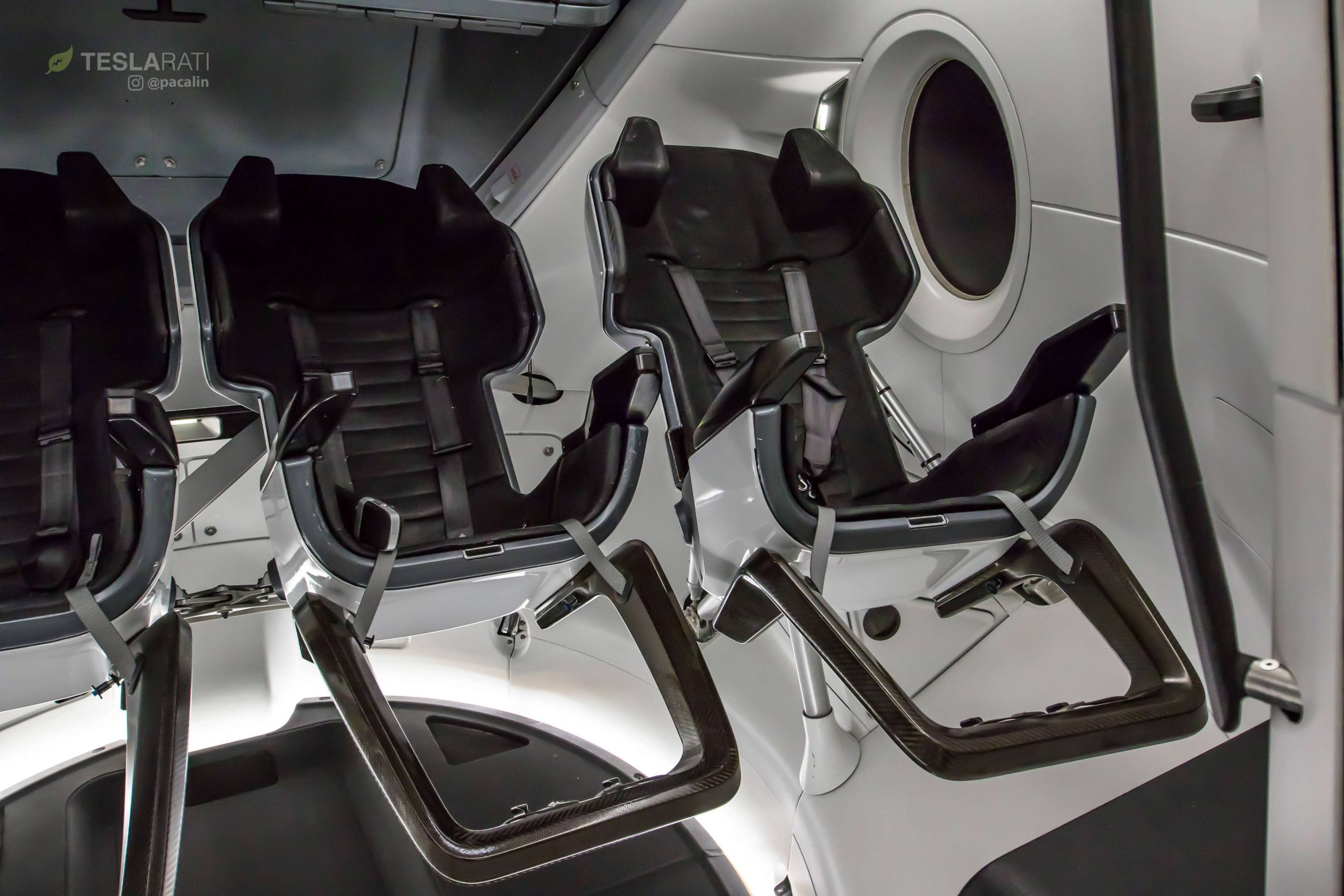
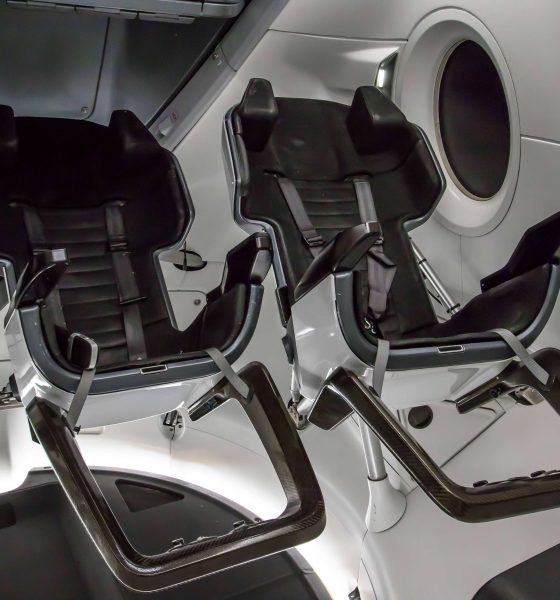
SpaceX
SpaceX gives press exclusive access to Crew Dragon spacesuit and simulator [gallery]
SpaceX has given the press access to its Crew Dragon simulator and custom-built spacesuit for the first time, providing an extraordinary level of detail and even the freedom to take photos of almost every aspect of both items. SpaceX is using both items to extensively train the Commercial Crew astronauts that will travel to the International Space Station aboard Crew Dragon, with the first crewed mission planned as early as April 2019.
- SpaceX’s Crew Dragon simulator, a near-exact replica of the spacecraft built for astronaut training. (Pauline Acalin)
- A less exact model of Crew Dragon meant for display purposes. (Pauline Acalin)
- SpaceX’s Crew Dragon simulator, a near-exact replica of the spacecraft’s actual cabin. (Pauline Acalin)
- SpaceX’s Crew Dragon simulator, a near-exact replica of the spacecraft built for astronaut training. (Pauline Acalin)
- SpaceX’s Crew Dragon simulator, a near-exact replica of the spacecraft built for astronaut training. (Pauline Acalin)
An incredible amount of work has gone into making SpaceX’s spacesuit as functional, lightweight, and astronaut-friendly as possible, and it’s eminently clear that the company’s exceptionally minimalist suit design is more than it seems once one dives into the suit’s actual capabilities. The slick and iconic helmet is one of the first things the eye gravitates towards when looking at the SpaceX spacesuit, and its aesthetic beauty has by no means come at the cost of functionality.
The majority of the helmet is 3D printed and SpaceX has used that capability to directly integrate valves, a number of complex mechanisms for visor retraction and locking, microphones, and even air cooling channels into the helmet’s structure. The fact that it looks so minimal and simple is only the case after a huge amount of effort was directed at simplifying the user experience for astronauts and ensuring extremely reliability and intuitive control and actuation mechanisms throughout.
- SpaceX’s extraordinary custom spacesuit. Crew Dragon astronauts will wear this suit while inside the space capsule. (Pauline Acalin)
- The helmet’s beautiful minimalism hides a huge amount of functionality. (Pauline Acalin)
- SpaceX’s suit helmet is made largely of 3D-printed plastic, while the suit’s grey and white fabric are Nomex and Teflon, respectively. (Pauline Acalin)
- The suit’s gloves feature conductive leather to allow astronauts to use Crew Dragon’s capacitive touch screen controls while suited up. (Pauline Acalin)
- All of the suit’s materials were selected with fire retardance as a major priority, a necessity given the elevated oxygen environment that will be present aboard flightworthy Crew Dragons. (Pauline Acalin)
One of the most difficult challenges of the spacesuit’s design was bringing all necessary external connections (power, water, air, etc) into one single umbilical panel located in the middle of the suit’s right thigh, meaning that astronauts will only have to worry themselves with a single, simple connection point once inside Crew Dragon. Additionally, SpaceX wanted to ensure optimal mobility inside Crew Dragon’s cabin while still allowing for operations in the event of extreme emergencies and loss of cabin pressure on-orbit. As a result, the spacesuit has been designed to allow Dragon’s crew to work in even the most extreme emergency conditions, up to and including hard vacuum. The suits would still require some sort of backpack if they were ever needed for actual spacewalks outside the capsule or ISS, so that functionality is off the table for now.
Inside the Crew Dragon simulator, SpaceX has built a near-exact copy of the spacecraft cabin astronauts will find aboard the actual capsules they will ride into orbit, at least in terms of functionality and fit tests (comfort, seat design, etc). Relegated to sit on Earth forever, the simulator likely doesn’t feature the same sort of obsessive weight reduction measures that will be present on flight hardware, but everything else is almost certainly as close to identical as possible.
Stay tuned for more news from SpaceX’s Crew Dragon media event.
For prompt updates, on-the-ground perspectives, and unique glimpses of SpaceX’s rocket recovery fleet check out our brand new LaunchPad and LandingZone newsletters!

Investor's Corner
SpaceX IPO is coming, CEO Elon Musk confirms
However, it appears Musk is ready for SpaceX to go public, as Ars Technica Senior Space Editor Eric Berger wrote an op-ed that indicated he thought SpaceX would go public soon. Musk replied, basically confirming it.

Elon Musk confirmed through a post on X that a SpaceX initial public offering (IPO) is on the way after hinting at it several times earlier this year.
It also comes one day after Bloomberg reported that SpaceX was aiming for a valuation of $1.5 trillion, adding that it wanted to raise $30 billion.
Musk has been transparent for most of the year that he wanted to try to figure out a way to get Tesla shareholders to invest in SpaceX, giving them access to the stock.
He has also recognized the issues of having a public stock, like litigation exposure, quarterly reporting pressures, and other inconveniences.
However, it appears Musk is ready for SpaceX to go public, as Ars Technica Senior Space Editor Eric Berger wrote an op-ed that indicated he thought SpaceX would go public soon.
Musk replied, basically confirming it:
As usual, Eric is accurate
— Elon Musk (@elonmusk) December 10, 2025
Berger believes the IPO would help support the need for $30 billion or more in capital needed to fund AI integration projects, such as space-based data centers and lunar satellite factories. Musk confirmed recently that SpaceX “will be doing” data centers in orbit.
AI appears to be a “key part” of SpaceX getting to Musk, Berger also wrote. When writing about whether or not Optimus is a viable project and product for the company, he says that none of that matters. Musk thinks it is, and that’s all that matters.
It seems like Musk has certainly mulled something this big for a very long time, and the idea of taking SpaceX public is not just likely; it is necessary for the company to get to Mars.
The details of when SpaceX will finally hit that public status are not known. Many of the reports that came out over the past few days indicate it would happen in 2026, so sooner rather than later.
But there are a lot of things on Musk’s plate early next year, especially with Cybercab production, the potential launch of Unsupervised Full Self-Driving, and the Roadster unveiling, all planned for Q1.
News
SpaceX reportedly mulling IPO, eyeing largest of all time: report
“I do want to try to figure out some way for Tesla shareholders to participate in SpaceX. I’ve been giving a lot of thought to how to give people access to SpaceX stock,” Musk said.
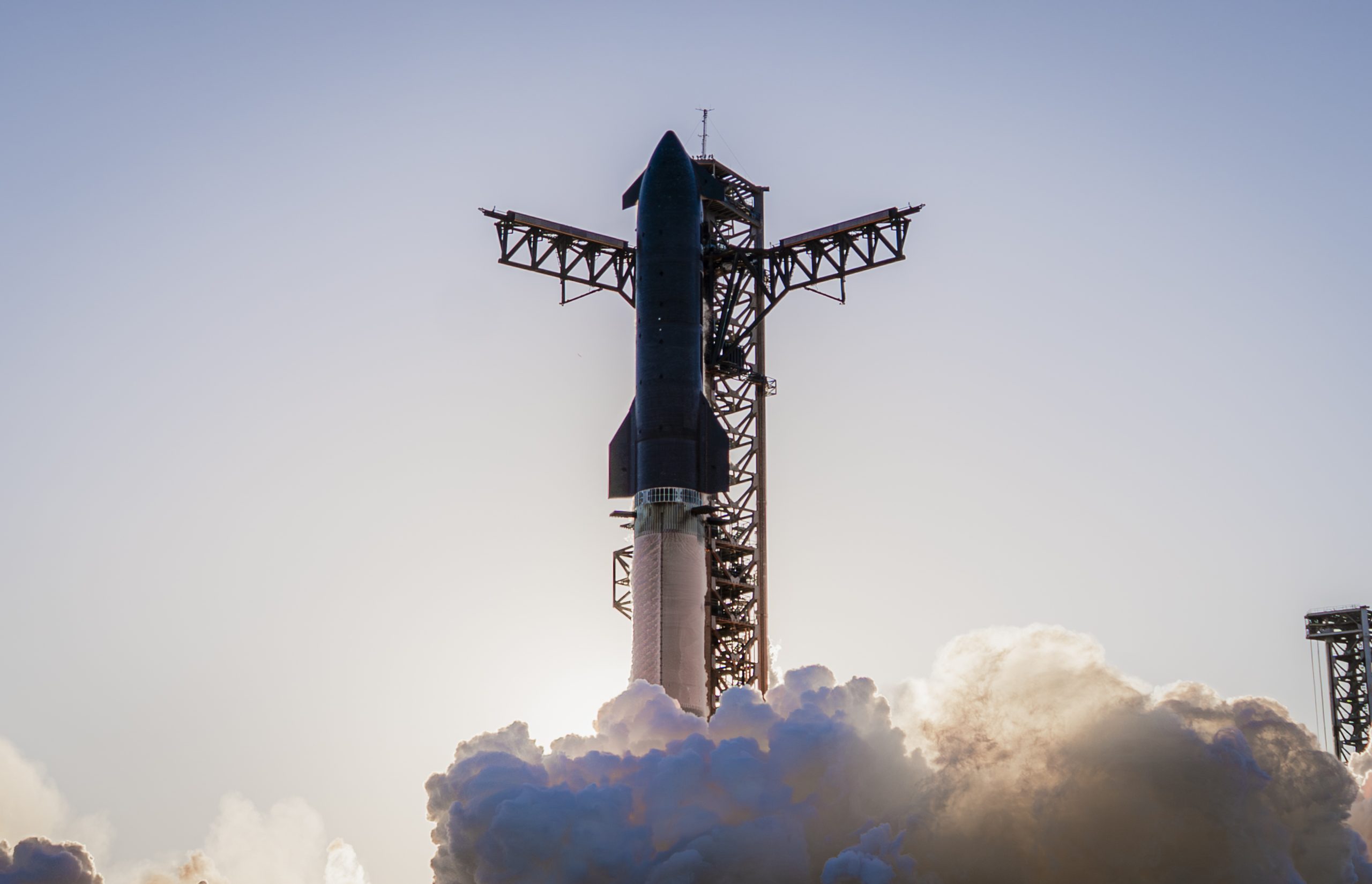
SpaceX is reportedly mulling an initial public offering, eyeing what would be the largest valuation at the time of availability of all time, a new report from Bloomberg said on Tuesday.
It is one of many reports involving one of Elon Musk’s companies and a massive market move, as this is not the first time we have seen reports of an IPO by SpaceX. Musk himself has also dispelled other reports in the past of a similar nature, including an xAI funding round.
SpaceX and Musk have yet to comment on the report. In the past, untrue reports were promptly replied to by the CEO; this has not yet gained any response, which is a good sign in terms of credibility.
However, he said just a few days ago that stories of this nature are inaccurate:
“There has been a lot of press claiming SpaceX is raising money at $800B, which is not accurate. SpaceX has been cash flow positive for many years and does periodic stock buybacks twice a year to provide liquidity for employees and investors. Valuation increments are a function of progress with Starship and Starlink and securing global direct-to-cell spectrum that greatly increases our addressable market. And one other thing that is arguably most significant by far.”
There has been a lot of press claiming @SpaceX is raising money at $800B, which is not accurate.
SpaceX has been cash flow positive for many years and does periodic stock buybacks twice a year to provide liquidity for employees and investors.
Valuation increments are a…
— Elon Musk (@elonmusk) December 6, 2025
Musk has discussed a potential IPO for SpaceX in recent months, as the November 6 shareholder meeting, as he commented on the “downsides” of having a public company, like litigation exposure, quarterly reporting pressures, and other inconveniences.
Nevertheless, Musk has also said he wants there to be a way for Tesla shareholders to get in on the action. At the meeting in early November, he said:
“I do want to try to figure out some way for Tesla shareholders to participate in SpaceX. I’ve been giving a lot of thought to how to give people access to SpaceX stock.”
Additionally, he added:
“Maybe at some point., SpaceX should become a public company despite all the downsides of being public.”
Musk has been historically reluctant to take SpaceX public, at times stating it could become a barrier to colonizing Mars. That does not mean it will not happen.
Bloomberg’s report cites multiple unidentified sources who are familiar with the matter. They indicate to the publication that SpaceX wants to go public in mid-to-late 2026, and it wants to raise $30 billion at a valuation of around $1.5 trillion.
This is not the first time SpaceX has discussed an IPO; we reported on it nine years ago. We hope it is true, as the community has spoken for a long time about having access to SpaceX stock. Legendary investor Ron Baron is one of the lucky few to be a SpaceX investor, and said it, along with Tesla, is a “lifetime investment.”
Tesla bull Ron Baron reveals $100M SpaceX investment, sees 3-5x return on TSLA
The primary driver of SpaceX’s value is Starlink, the company’s satellite internet service. Starlink contributes 60-70 percent of SpaceX’s revenue, meaning it is the primary value engine. Launch services, like Falcon 9 contracts, and the development of Starship, also play supporting roles.
News
SpaceX reaches incredible milestone with Starlink program
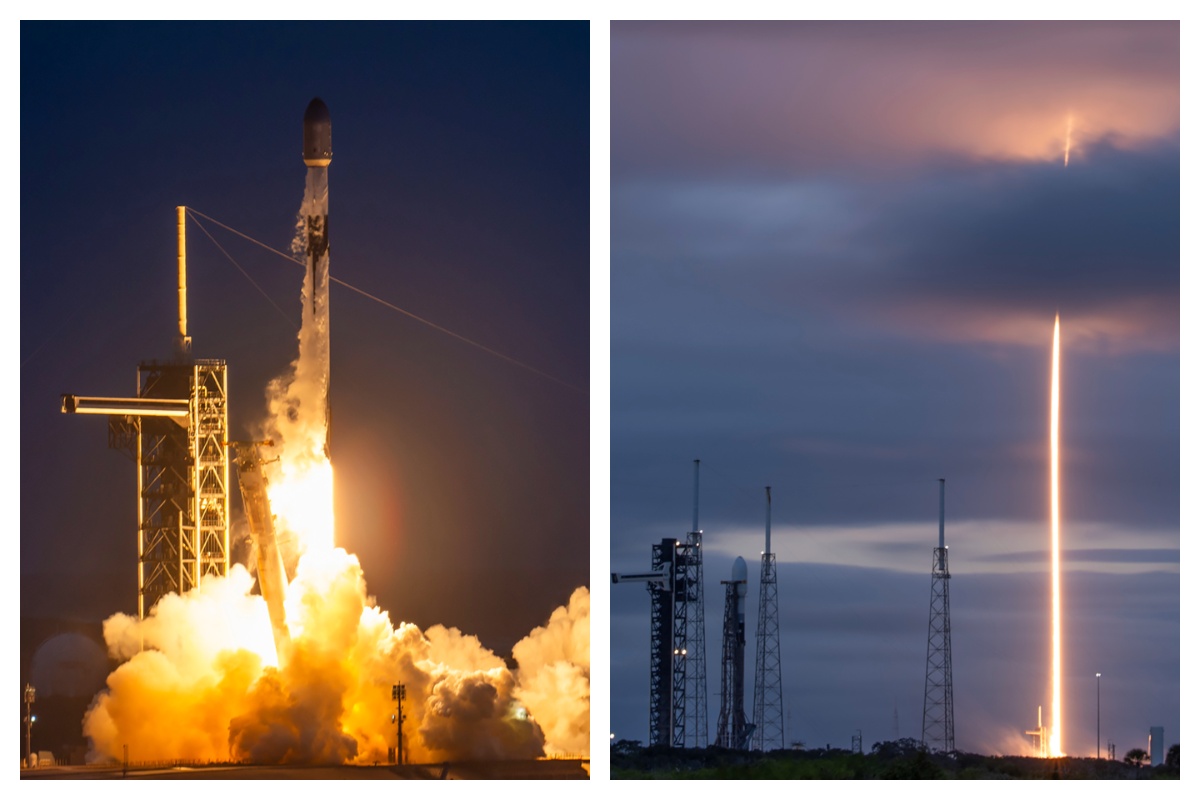
SpaceX reached an incredible milestone with its Starlink program with a launch last night, as the 3,000th satellite of the year was launched into low Earth orbit.
On Monday, SpaceX also achieved its 32nd flight with a single Falcon 9 rocket from NASA’s Kennedy Space Center.
The mission was Starlink 6-92, and it utilized the Falcon 9 B1067 for the 32nd time this year, the most-used Falcon booster. The flight delivered SpaceX’s 3000th Starlink satellite of the year, a massive achievement.
There were 29 Starlink satellites launched and deployed into LEO during this particular mission:
Falcon 9 launches 29 @Starlink satellites from Florida pic.twitter.com/utKrXjHzPN
— SpaceX (@SpaceX) December 9, 2025
SpaceX has a current goal of certifying its Falcon boosters for 40 missions apiece, according to Spaceflight Now.
The flight was the 350th orbital launch from the nearby SLC-40, and the 3,000 satellites that have been successfully launched this year continue to contribute to the company’s goal of having 12,000 satellites contributing to global internet coverage.
There are over five million users of Starlink, the latest data shows.
Following the launch and stage separation, the Falcon 9 booster completed its mission with a perfect landing on the ‘Just Read the Instructions’ droneship.
The mission was the 575th overall Falcon 9 launch, highlighting SpaceX’s operational tempo, which continues to be accelerated. The company averages two missions per week, and underscores CEO Elon Musk’s vision of a multi-planetary future, where reliable connectivity is crucial for remote work, education, and emergency response.
As Starlink expands and works toward that elusive and crucial 12,000 satellite goal, missions like 6-92 pave the way for innovations in telecommunications and enable more internet access to people across the globe.
With regulatory approvals in over 100 countries and millions of current subscribers, SpaceX continues to democratize space, proving that reusability is not just feasible, but it’s also revolutionary.
